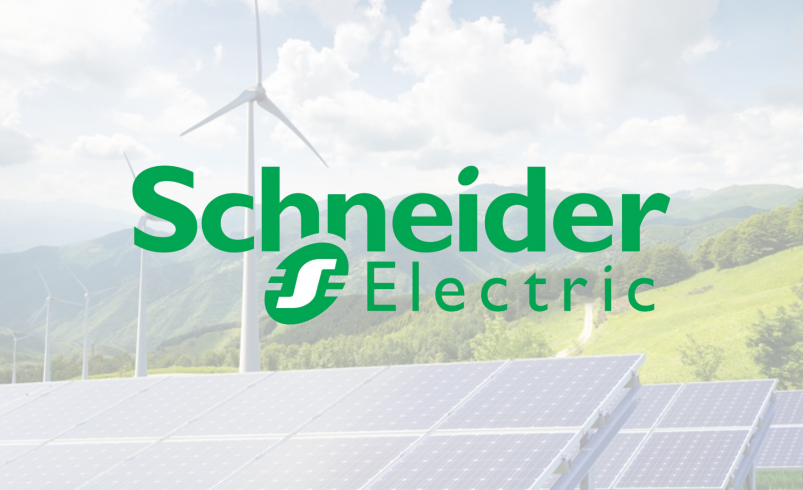Schneider Electric Halves Plant Emissions, Proves Energy Efficiency Is the Philippines’ First Fuel
- September 15, 2025
- 0

Schneider Electric Philippines has cut emissions from its manufacturing facility by nearly half since 2019. In an episode of the Power Podcast, Atty. Norman Roland E. Ocana III, Government Affairs Director and Territory Sustainability Leader of Schneider Electric Philippines, said this achievement shows how decarbonization is possible through consistent action and long-term planning.
At the same time, Schneider Electric is helping Philippine businesses unlock what it calls the country’s fastest “new” power source: energy efficiency.
Walking the talk on decarbonization
Over the past five years, Schneider Electric’s Philippine plant underwent a series of retrofits. The company upgraded chillers, replaced air-conditioning units, and installed monitoring systems to cut waste and track energy use.
“These steps, little by little over the past five years, all lead to our goal, which is really a reduction in carbon,” Ocana said.
The result has been clear. “Right now, I believe we’re at almost 50% reduced from 2019, if I’m not mistaken,” he added.
For Ocana, the lesson is that decarbonization requires persistence. “It wasn’t something that happened overnight. And all of these steps lead to our goal, which is really a reduction in carbon,” he said.
By applying its own technologies to its operations, Schneider Electric demonstrates credibility as a solutions provider. “We do. We do. And thankfully, the company also encourages and actually has sustainability in its DNA,” Ocana said.
Energy efficiency as the “first fuel”
In the same podcast interview, Ocana explained that the bigger story is how efficiency can free up capacity across the economy.
“Energy saved is energy that can be used elsewhere,” he said. “The fact of the matter is it does take a while for power plants to be built, and the energy that we save — that’s energy that can be used for other purposes.”
For Schneider Electric, efficiency is the “first fuel” — cheaper and faster than building new generation.
Ocana gave a practical example: “If Schneider Electric solutions can help identify which rooms in this floor are occupied, turn off the lights in others that are not. So very basic, but if you take a look at how much savings you can have just by that practice, you’d be surprised.”
He also pointed to temperature control as a key measure. “Ideally, they say that the optimal temperature would be about 24, 25 degrees. The solution can also fix it at 24 so that nobody can fiddle around with the controls or make it adjust accordingly based on the time of the day and the number of people in the room,” Ocana explained.
Policy and practice
The Energy Efficiency and Conservation Act requires businesses and public institutions to submit energy use plans. Schneider Electric supports both government agencies and private firms in complying with these rules, while also sharing lessons from other markets.
Ocana noted that large conglomerates have already adopted energy-efficient practices, but small and medium enterprises (SMEs) need tailored support. “Development would definitely have to involve the 99% of the other businesses out there, which is the MSMEs,” he said. “So it’s really about finding what is material to them.”
That could mean safer electrical systems, better lighting, or more efficient packaging. For Schneider Electric, the key is to help SMEs identify and act on what matters most to their operations.
Rising urgency
The demand for efficiency is becoming more urgent as artificial intelligence and data centers increase the country’s electricity needs. “An AI prompt uses about 10 times the energy of a simple web search,” Ocana said, underscoring the need for efficient cooling and operations in data centers. Large-scale data centers also require massive cooling.
Ocana said Schneider Electric’s role is to ensure this growth does not strain the grid. “What we want to do as Schneider Electric is to ensure that this energy is used efficiently, that the data centers that power artificial intelligence operate optimally and efficiently,” he explained.
Thirty years in the Philippines
Schneider Electric will mark its 30th year in the Philippines in 2025. Its presence spans logistics, commercial operations, and a global supply chain hub.
The company’s record of halving its own emissions and delivering energy-saving solutions to clients positions it as both an industry leader and a reliable partner in the country’s energy transition.
For Ocana, the takeaway is straightforward: sustainability is not abstract. It is a matter of concrete action. “We walk the talk,” he said.Follow Power Philippines on Facebook and LinkedIn or join our Viber community for more updates.